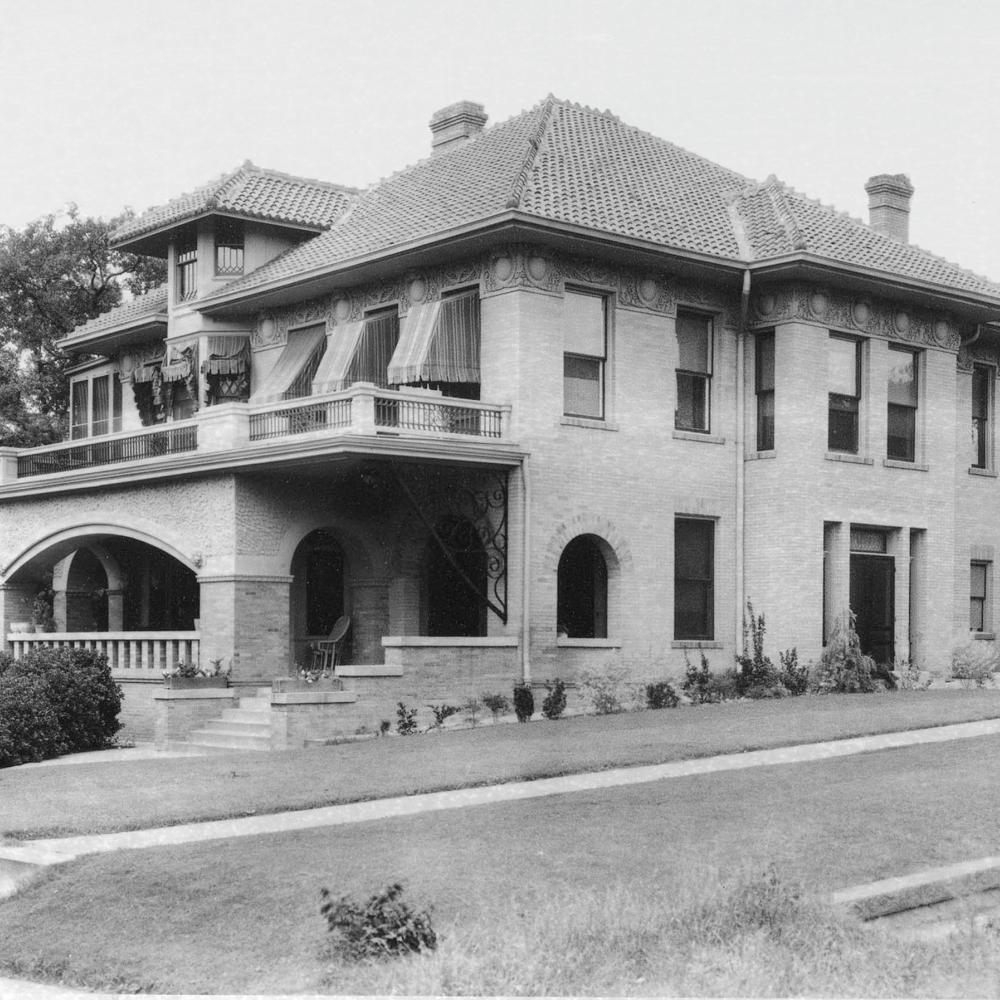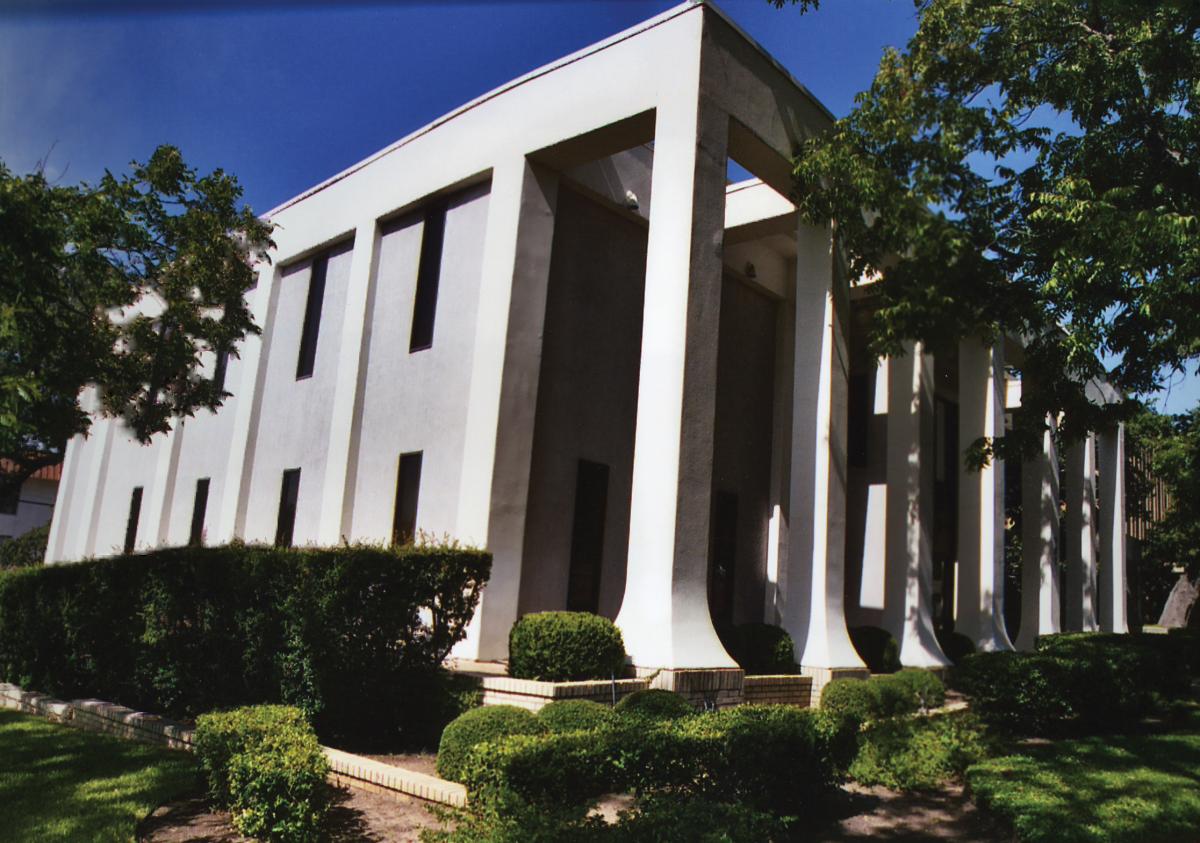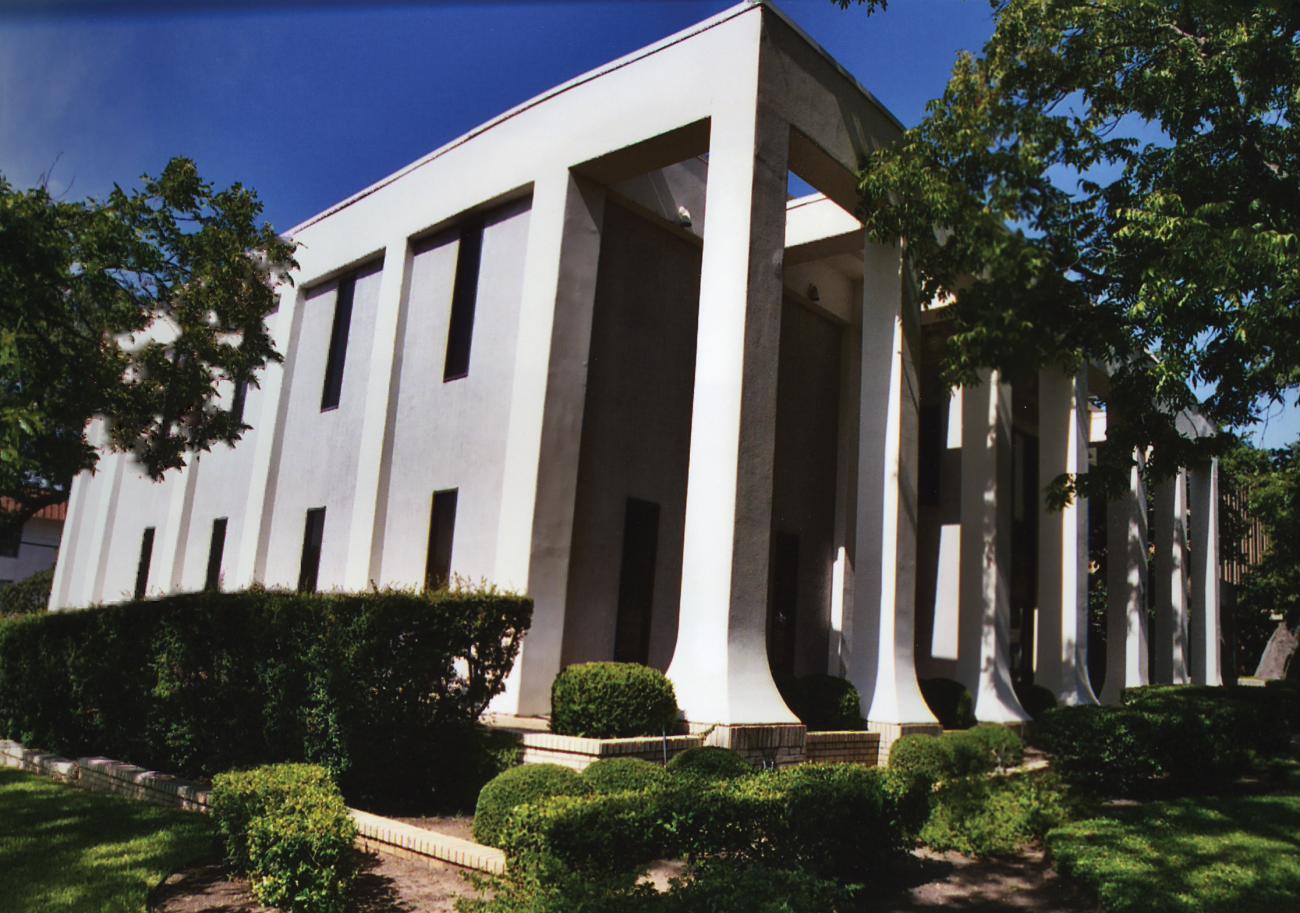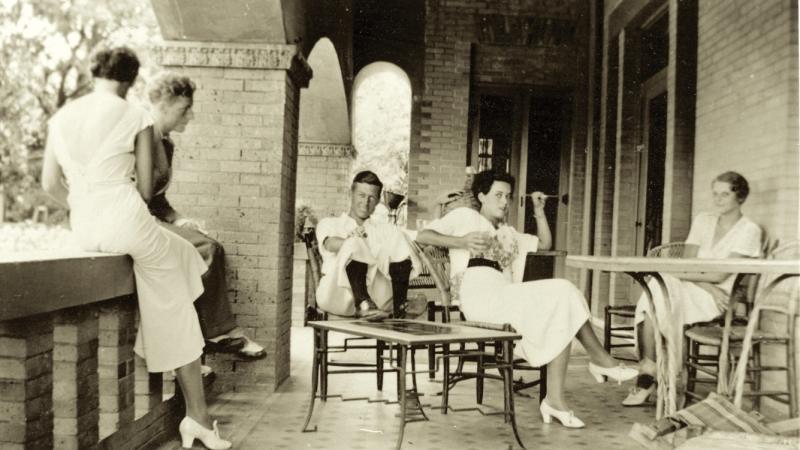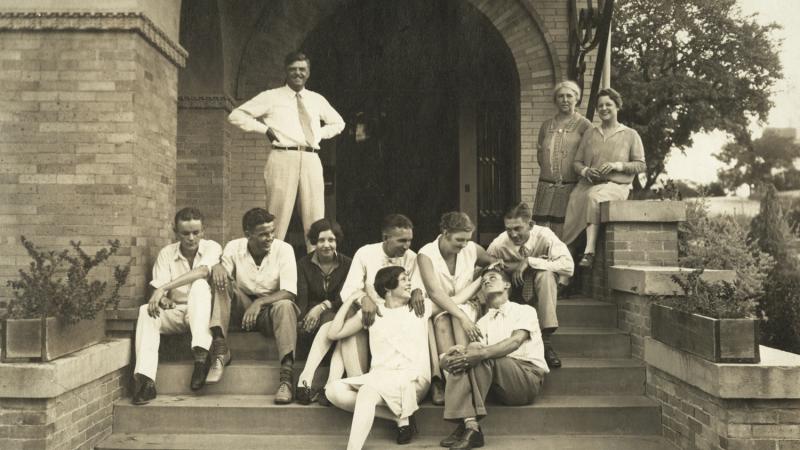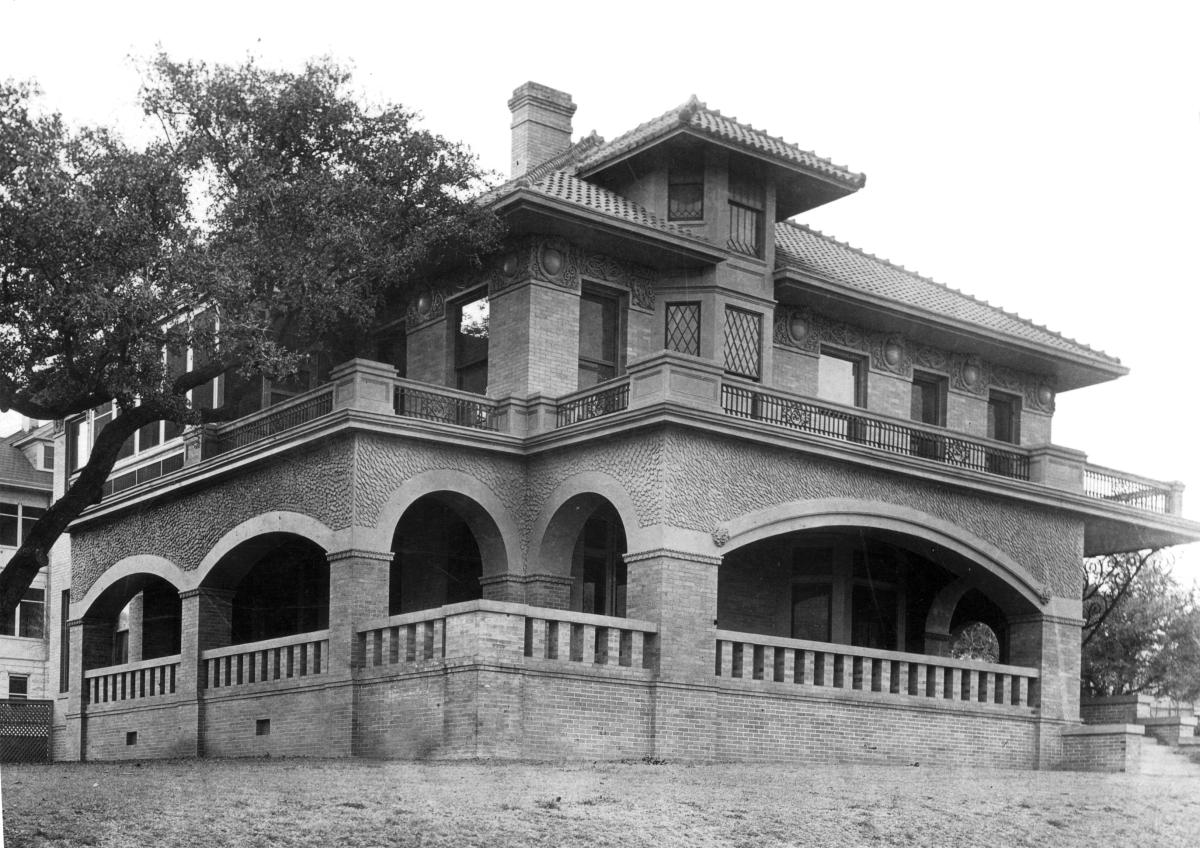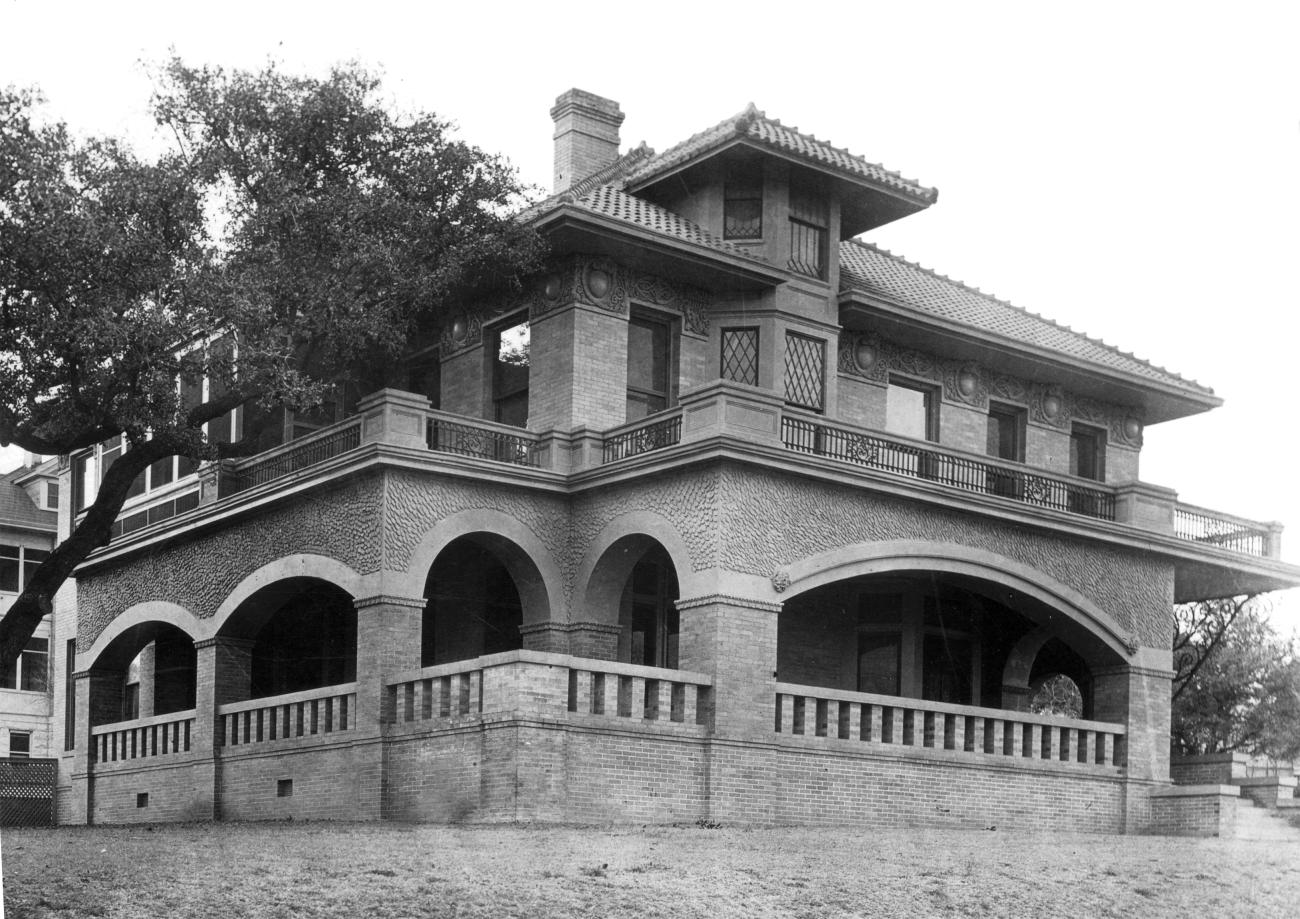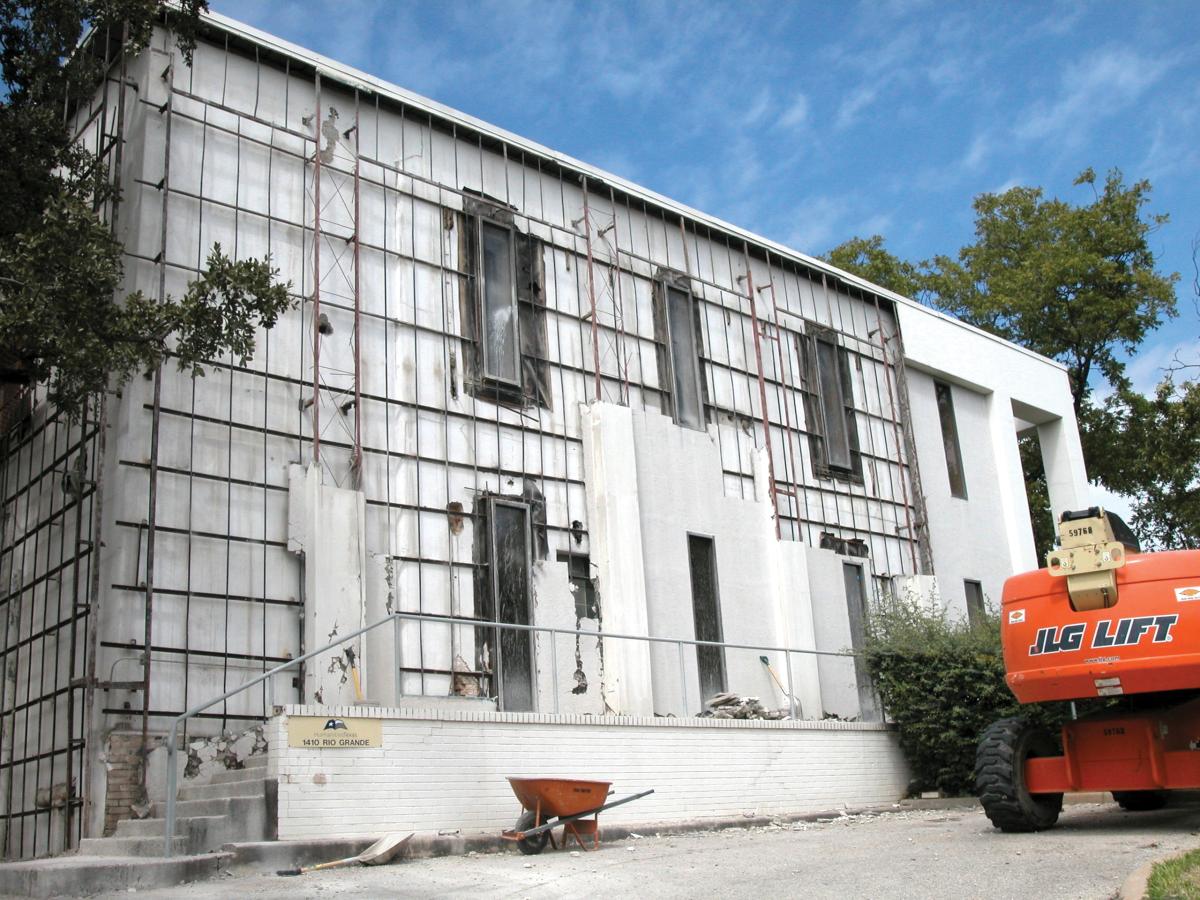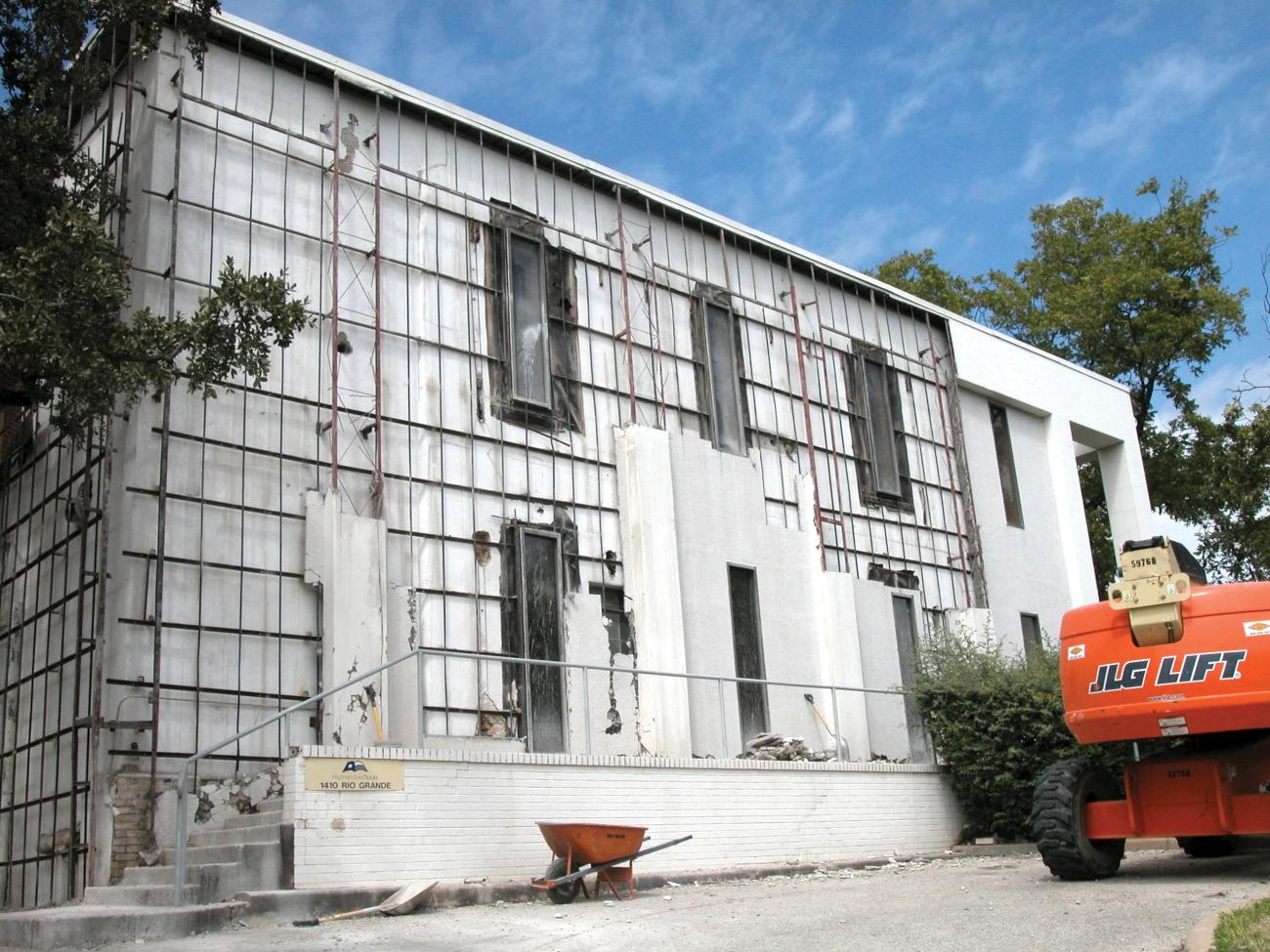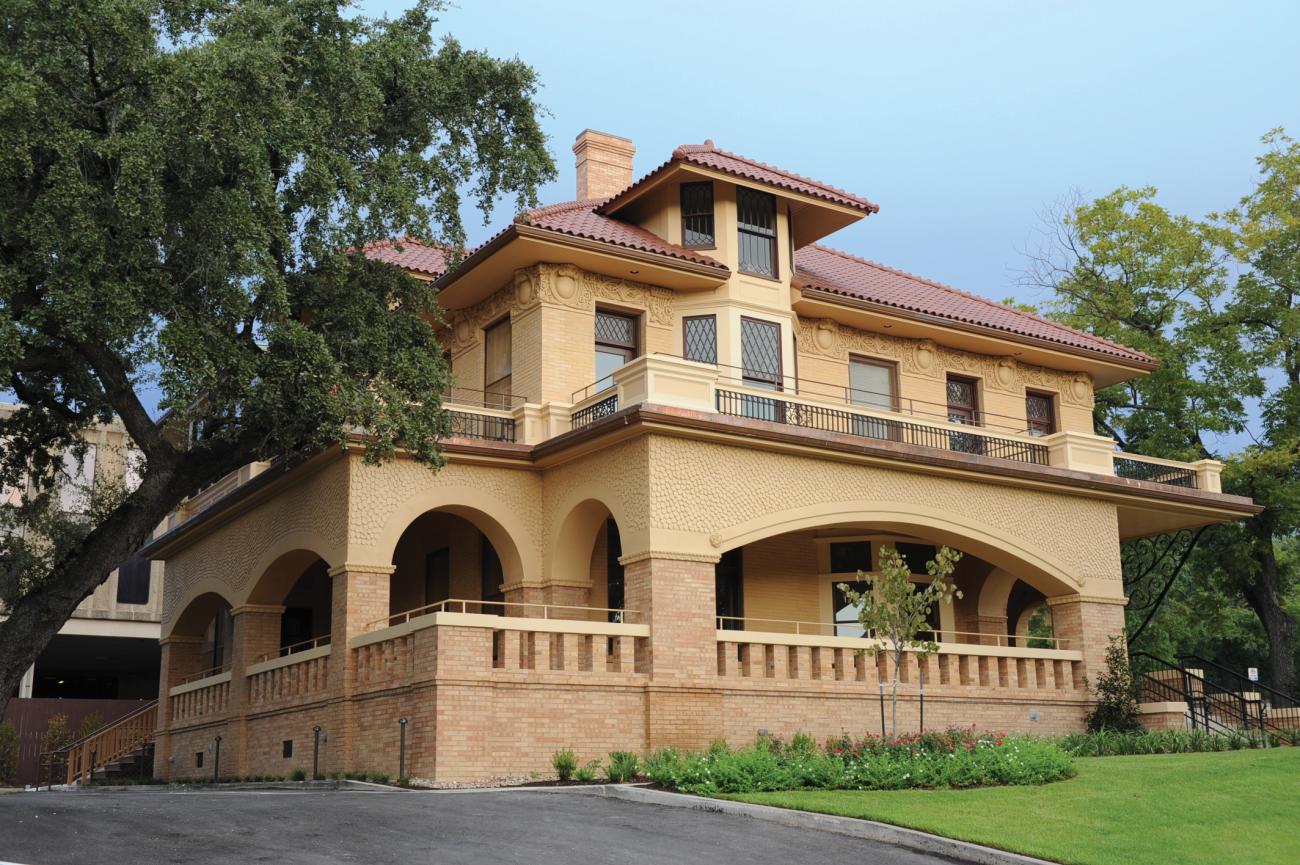On a sunny spring day in March 2005, Humanities Texas director Michael Gillette strode up the steps of the Texas Oil building in Austin, accompanied by a couple of colleagues and an architectural consultant, Larry Speck. Gillette was looking for a new headquarters for the state humanities council. Its current cramped office condo in a suburban strip center was far from down- town Austin and inadequate for the organization’s staff and activities. The white stucco structure at 710 West 15th Street certainly fit Gillette’s three main criteria: location, location, location. Just blocks from the state capitol, it was also an easy walk from the state history museum, library and archives, and the University of Texas campus, particularly the school’s sparkling new art museum.
Humanities Texas needed such visibility. Shortly after Gillette took over in 2003, he manned a table at the Texas Book Festival, where hardly anyone had heard of the organization. The current headquarters was across a river and up to a half-hour drive from downtown Austin, which was then in the midst of a major revitalization. This distance presented a psychological barrier between the organization and the state’s leaders and academics.
“There was a real resistance to going to the old office,” Gillette remembers. “We couldn’t do any programs there anyway because there was no space for them. . . . We had no visibility at all. For us to be a robust, significant statewide organization, we had to have a prominent physical presence. I thought near the capitol would be good because there was so much traffic to the capitol complex and the university.”
The Texas Oil building also offered abundant space, access to parking—and the price was right. But it was ugly, and otherwise not the kind of place Gillette had in mind. The cheap stucco facade was matched by a bland interior: low tile ceilings, fluorescent lighting, and dark, narrow cubicles for employees. Humanities Texas wanted a historic building—but this one didn’t even look old, despite a construction date of 1907.
But as Gillette and the others looked more closely, they noticed some intriguing details. An ornate roof cornice peeked out at the north entrance. Above the low ceilings, they spotted window and door openings. They pulled up a corner of the carpet, unveiling the old house’s original oak-and-longleaf-pine flooring. The most striking evidence of the building’s hidden potential was on the wall: a historic black-and-white photo of a spectacular old home. It was the very building that once stood on this exact spot and, they soon learned, was still there, nearly intact, entombed beneath thick layers of stucco.
Gillette looked around. He couldn’t imagine that what he saw bore any relationship to the ravishing turn-of-the-century mansion in the photo. But, with his architectural eye, Speck saw clues to a bygone nobility—an original fireplace here, antique chandelier there, the graceful old stairwell. A ceiling arch in the middle of an office, he pointed out, was actually one of nine arches depicted in the old photo. It had surmounted the original front entrance, which opened onto a porch that had been covered and turned into office space.
“There was a lore about that house among Austin architects,” says Speck. A former dean of UT’s architecture school, he remembered a local architectural historian who became livid whenever the subject of this building and the “idiocy” of its renovations came up. Speck knew that a once beautiful home was standing before them. They should buy it, he told Gillette.
“It was a big swallow-hard decision, because you had to use your imagination to see what the possibilities were,” Speck recalls. “They’d have to completely renovate, and there were so many things that could go wrong. But you never hit real greatness if you’re afraid to take a step like that.” Speck helped persuade the board of Humanities Texas, telling them, “If you want to increase the visibility and influence of the organization, you’ve got to take some chances.”
Gillette agreed. “What sold me on the building to begin with,” he says, “was the mystique of having a one-hundred-year-old mansion that had been hidden here for forty years and nobody knew it existed.” He knew that story could entice donors—and he was going to need them.
But Humanities Texas had little experience with fund-raising, and it did not have enough money to buy the property. This posed a chicken-and-egg dilemma: How do you raise funds to renovate a building you don’t even own? Nevertheless, Gillette and the board decided to press ahead, commissioning an estimate of the costs of purchase and renovation. They agreed to buy the Texas Oil building, with the owner financing the purchase, counting on the sale of their current headquarters to fund the down payment.
In November 2006, one week before closing on the Texas Oil building, Gillette received shocking news: The buyer of their current offices was backing out. Gillette’s heart sank. Fortunately, he’d arranged a backup buyer. He called them. Then they, too, pulled out.
It was the lowest point in the journey toward a new building and a renewed Humanities Texas. For the moment, the whole enterprise teetered on the edge of failure.
Gillette thought a lot about what was at stake, not just for Humanities Texas, but for Austin as well. He had begun to research the Texas Oil building’s history, and realized that beneath the bland seventies facade was an architectural treasure that perhaps no other buyer would have the motivation to restore. The original structure had been built by wealthy cotton broker Edmund Byrne, whose wife, Ellen, came from one of the city’s most prominent families. It was an especially elegant home in its day, when the city had just begun to develop an affluent class. The neighborhood itself was ritzy, located on the fringes of a town that then numbered fewer than 25,000 souls.
It was designed by one of the area’s most prominent architects, Charles H. Page, who had worked on a wide range of homes, schools, and other buildings, and he seemed to have put a little of each one into Byrne’s house: Prairie-style porches surrounded a quasi-Mission Revival structure, with an art nouveau frieze, Mission-style terra-cotta roof tiles, Richardsonian-Romanesque arches.
“Page was significant to Austin’s architecture,” explains Wayne Bell, an architect with expertise in historic preservation who advised Humanities Texas on the project. “This is one of his most unusual because it draws from so many things in the contemporary Texas vernacular.” The builders used native materials: limestone from the surrounding Hill Country, brick from nearby Elgin, wood from Texas pine, Austin-forged iron.
After his wife died, Byrne sold the house to cotton trader, investor, and exporter David Reed, a friend of Lyndon Johnson’s who served on the school board and city council, and who slightly remodeled the house. After Reed’s death in 1948, an insurance company bought the property and turned the house into an office building, the first of several transformations. As the city grew, the area around the capitol changed from residential to commercial. Then came the disastrous seventies remodeling by a Las Vegas-style developer. This “modernization” perpetrated some serious damage, but it had the unintended effect of preserving much of the original Byrne home.
The question was, Would it ever be resurrected? With the withdrawal of both potential buyers for its current headquarters, Humanities Texas had no way to fund the down payment. After recovering from the initial shock, Gillette called his deputy director, Yvonne Gonzalez. What would they do now? Gonzalez, however, had already secured a line of credit with a bank, and Humanities Texas was soon able to borrow $250,000 against their equity in the current headquarters building, which the owners of the Texas Oil building agreed to accept as a down payment. It would be a bigger stretch now, because they would have to repay the loan and raise more money for the purchase than they’d planned, at least until their headquarters sold. But the project was alive after all. In January 2007, the staff moved in and promptly rechristened the building as the Byrne-Reed House.
The old headquarters eventually sold for over $600,000, but it would take a lot more than that to restore the house to its original glory. The preliminary study of the project estimated a cost of $2 million for the reconstruction, plus $1.9 million for the purchase of the house—close to $4 million to transform the building into a working headquarters for Humanities Texas.
The first step to acquiring a new headquarters, Gillette knew, was to expand the board of directors, which included a number of academics who brought more intellectual than financial firepower. A few months before he’d toured the Texas Oil building, he’d found the perfect new candidate: an old college buddy who was one of the state’s most accomplished fund-raisers, Houston lawyer Julius Glickman. One of the nation’s top corporate litigators, the well-connected Glickman agreed to head the capital campaign and, fortunately, had a contact list that made hiring a separate fund-raising agency unnecessary.
“We needed somebody who knew how to raise money,” Gillette says. “He made a generous contribution and that got several others to contribute.” Glickman “could open doors that I couldn’t. It was inspiring to watch him work.”
Every board member contributed personally to the project, which made it easier to ask others to do so. They and former board members (fifteen in all) throughout the state headed up fund-raising efforts in their communities. “A lot of it is who you know,” Glickman explains. “I called on a lot of my friends, some of whom would listen and give money.”
One such friend was Jill Wilkinson. Gillette knew her Still Water Foundation was interested in arts and culture. He also knew that Wilkinson didn’t know much about Humanities Texas. He and Glickman took Wilkinson to dinner. Glickman didn’t waste any time. “I said, ‘here’s what I’ve given, and I’d like for you to give that same amount,’” Glickman recalls. “Mike just about died. Two weeks later, she called and said, ‘I’ll match what you match.’” That plus another early commitment from Glickman friend Mickey Klein and others soon gave the project a $1 million cushion.
Gillette credits Glickman and the other early contributors, but Glickman is quick to return the compliment. “Without Mike, we could not have gotten the money,” he says. “He and the staff did great work.” It was a frantically busy time, with the regular business of grant applications to process while researching prospects, sending out direct-mail pleas, and handling other correspondence with donors. The staff was also giving tours of the building, while under construction, to historical and student groups, which the preservation community lauded.
Teaching was a necessary part of the fund-raising effort. “None of us realized how difficult it was going to be to raise money for an organization no one had ever heard of,” Gillette remembers. Glickman, accustomed to raising funds for highly regarded institutions like the University of Texas, faced an unprecedented challenge. “I had to spend the first few minutes explaining just who we were and what we did,” he recalls.
Describing the architectural project was also challenging. In its current condition, the building itself wasn’t much of a draw, but the fund-raisers had props. Descendants of the first two families to occupy the house provided old photos of the interior and exterior, which Humanities Texas included in a slick brochure that became the fund-raising team’s calling card. Gillette often took prospective donors to the construction site, and explained how the torn-up stucco building would morph into something resembling the beautiful old photos.
“The other thing you have to have is the right message,” Glickman says. “We took a lot of time to think about what this building meant to us, and how it would change the humanities. We had good luck with people who valued what the humanities stand for. And people recognized our teacher institutes and lectures and exhibits that had gone to eighty-six cities or towns around the state and realized how much better we could do with this house as a headquarters.”
On Saturday morning, December 1, 2007, Gillette received a phone call from the National Endowment for the Humanities. As he stood in his front yard—his house had terrible cell phone reception—Bruce Cole gave him the best news imaginable. “I want to start your weekend on a positive note,” said the former NEH Chairman. “You’ve got your million dollar grant!” Thanks in large part to its demonstrated fund-raising capability, NEH was awarding Humanities Texas a $1 million matching grant—the largest it has ever awarded in Texas, and more than double what Gillette had allowed himself to hope for.
The grant arrived just in time. As the recession took hold in 2008 and 2009, donations slowed. “Those who turned us down did it because of the economy,” Glickman says. “We were the new kid on the block in a bad situation, so we had a harder hill to climb.” He estimates that they made twenty to thirty contacts for each donation they received. One foundation reneged on a six-figure pledge. But the fund-raising team was able to raise its game. “The more we did it,” Gillette recalls, “the more persuasive all of us became. It forced us to really articulate why Humanities Texas is important. That was very valuable in itself. It really mobilized the board.”
With money in the bank and research in place, restoration began in 2009 while the staff moved to temporary quarters. It was still possible that they had bought a pig in a poke, as Texans say. Because the building was in use until restoration began, the architects and contractors really didn’t know exactly what was left of the old building, what could be restored, and exactly how much it might cost.
Fortunately, Humanities Texas’s architects were as good as its fund-raisers. Clayton and Little Architects, led by Emily Little, and project managers HS&A had racked up years of experience in historical reconstruction. Faculty and students from the UT architecture school contributed expertise and effort. The Austin History Center provided “a treasure chest of drawings” by local architects of the Reed family’s early 1948 remodel.
As workers painstakingly removed each layer of anachronistic encrustation, the architects made new drawings, using “those fabulous historical photographs” as guides, Little recalls. “It couldn’t have happened without them.” Her team members played detective one day, archaeologist the next, poring over enormous enlargements of the photos (occasionally resorting to magnifying glasses) to count the scallops on the arches and the bricks in the old chimney, and recover myriad other details. They studied “the ghosts in the walls,” impressions left by bookshelves, mantelpieces, and other fixtures that had been painted around.
As the careful demolition proceeded, the house’s hidden wonders began to emerge: iron-flecked decorative brickwork, parts of the roof-plaster frieze, porch columns with some plaster capitals nearly intact. The second-floor stucco removal unveiled two historic windows in their original wood frames with original glass and screens. The recovery of the home’s original brick walls provoked immense excitement. Clearing out Texas Oil’s rabbit warrens revealed a generously spaced first floor.
While blasting away four inches of poured concrete slab from the covered-over old porch, workers exposed the original encaustic tile, bearing the stamp “Ludowici-Celadon Co.” Little discovered that the manufacturer was still in business in Ohio. She sent them the originals, and arranged for a return shipment sufficient to replicate the original roof.
Some discoveries weren’t so pleasant. To run air-conditioning ducts through the walls, the 1970s renovators had used sledgehammers to smash graceful arches. Plumbers had chiseled and chopped through wood floors, walls, and anything else in their way.
To find a balance between preserving history and making the building work for twenty-first-century users, the architects sought advice from the Texas Historical Commission. Modern safety codes required balconies have railings higher than the two-foot-tall wrought-iron originals, so a contractor made a new, simpler, taller railing to sit behind the historic railing, which was fabricated from a segment of the original railing found embedded in a plaster wall. The team installed contemporary heating and air-conditioning units outside the house and in the basement and attics, preserving the original high ceilings. To give wheelchair users access to the upper floors, a new elevator was placed on the outside of the building in an area hidden from most street views. Damaged or missing brick and plaster features were replaced with reproductions almost impossible even for a professional like Little to detect.
While they couldn’t afford every last authentic touch, unanticipated items—exact replicas of the original windows, copper gutters and downspouts, finishing the third-floor conversion from attic to additional office space, and the adjoining carriage house (which would have required re-permitting if saved for later)—added up. By the time all the restoration and wiring and mechanical improvements were completed, the total budget was around $4.9 million—almost $1 million more than the original rough estimate.
“They did a masterful, exquisite job of bringing it all up to code and the performance standards we expect while keeping the spirit of the older building beautifully,” Speck says. To architect Little, it was all worth it. “I’ve been doing restoration for twenty-eight years,” she says. “This is the best one I ever worked on.”
For Glickman, the ribbon on the package was tied at a board meeting last fall after the staff had moved back in. He urged the members, some of whom were new, to finish the job of raising funds. “We’re almost here,” he told them. “We’ve worked long and hard on it. Let’s finish it.”
“How much more do you need?” spoke up a new member from San Antonio.
“About $80,000,” Glickman replied.
“Hell!” the new member exclaimed. “We’ll take care of that right now!” And he did.
When the building opened in August 2010, visitors were astonished by the light and airy feel of the porches and the interior, all furnished with donated period antiques. The building makes an attractive work space for the Humanities Texas staff, nearly all of whom have windows in their offices. The sprawling basement houses an exhibit workshop that also provides storage space for the organization’s fifty-plus traveling exhibits. The ground floor, which boasts a working kitchen, provides a congenial setting for social gatherings, receptions, screenings, lectures, and conferences. And the shaded porches furnish ample space for schmoozing. “We hope to make this a gathering place for the kind of activities and people Humanities Texas needs to influence,” Glickman says. “It’s going to be a beacon for the humanities.”
Although it has been open less than a year, the Byrne-Reed house has already secured for Humanities Texas a far higher profile than even Gillette could have imagined. “When I go to speak with members of the legislature or their staff, all of them know about the building,” he says.
“A lot of them saw it under construction.” The restoration has attracted widespread press attention and already garnered seven architecture awards.
“It’s made a big difference,” Glickman says. “Most people didn’t know what Humanities Texas was, and now everyone sees the house and the sign. Lieutenant Governor David Dewhurst came to the building and was so impressed by one of our teacher institutes that he got us $2 million in the legislative session. I don’t think it would have happened without that building.”
For architect Speck, who’s worked on NEH-supported projects before, it’s especially appropriate that his profession was so heavily involved. “I love to see architecture embraced as part of the humanities,” he says.
The restored mansion also constitutes a civic and cultural treasure for its community. “So few buildings of that era are left in Austin,” says Speck. “It’s unique architecturally, and because the families were prominent in Austin, it has social significance.” He believes that if Humanities Texas hadn’t acquired the house, one of the next owners would likely have torn it down. “It’s not often that someone has the desire to go in and restore a building and alter their use of it to meet the historic integrity of the house,” he says.
“It keeps alive a connection to the development of Austin itself,” says Bell. “It’s a great asset for the city of Austin and makes a strong statement across the country about what an agency with historic integrity can do.”
“I told them at the beginning: ‘If you do this project and do it right, you will be a total hero in this community,’” Speck says. “And they are heroes. They did it right.”

